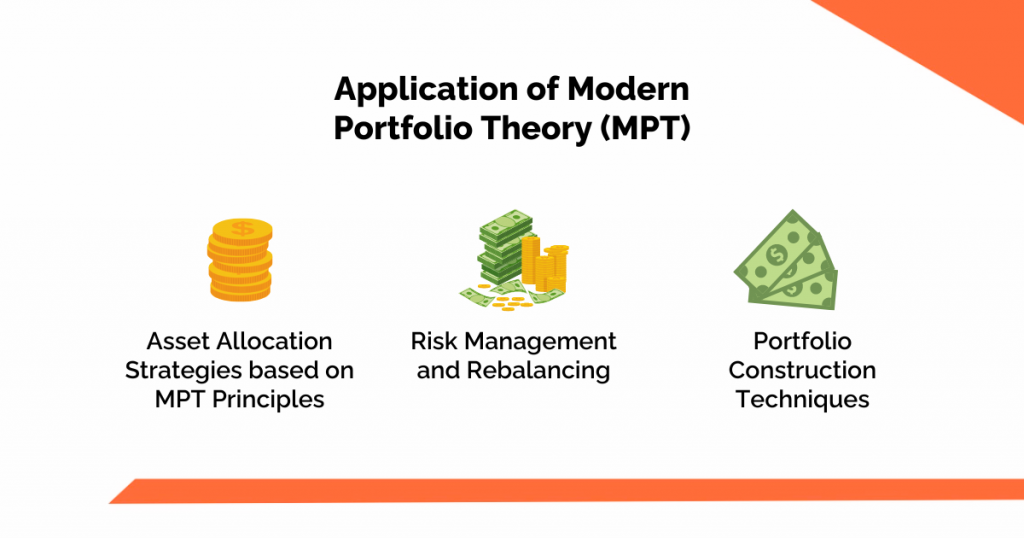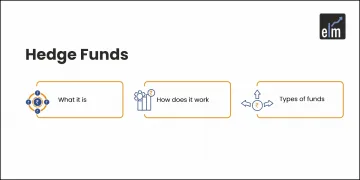For investors, portfolio management is essential because it helps them reach their goals while controlling risk. Portfolio management lessens the effect of individual investment losses on the total portfolio by spreading investments among a range of industries, asset classes, and geographic areas.
This risk management approach matches investment choices with investors’ objectives, time horizons, and risk tolerance in an effort to protect money and maximize returns.
Consistent oversight and adjustment guarantee that the portfolio stays in line with evolving market circumstances and investor goals. Additionally, portfolio management has a strong emphasis on cost effectiveness, reducing taxes, management fees, and transaction expenses to maximize net returns.
A key idea in investment strategy, Modern Portfolio Theory (MPT) has completely changed how people think about risk and return. Harry Markowitz developed the MPT, which emphasizes the value of diversification and the trade-off between risk and reward.
It offers a structure for building portfolios with the goal of minimizing risk for a certain level of return or maximizing return for a given level of risk. In the framework of risk management and effective asset allocation, MPT presents ideas like the efficient frontier and the Capital Asset Pricing Model (CAPM), which assist investors in optimizing their portfolios.
Explore how the Capital Asset Pricing Model (CAPM) complements Modern Portfolio Theory for smarter investment strategies. Learn more!
In this blog, let us discuss about What Modern Portfolio Theory Is and How Investors Use It-
What is Modern Portfolio Theory?
A key idea in investment strategy, Modern Portfolio Theory (MPT) has completely changed how people think about risk and return. Harry Markowitz developed the MPT, which emphasizes the value of diversification and the trade-off between risk and reward.
It offers a structure for building portfolios with the goal of minimizing risk for a certain level of return or maximizing return for a given level of risk. In the framework of risk management and effective asset allocation, MPT presents ideas like the efficient frontier and the Capital Asset Pricing Model (CAPM), which assist investors in optimizing their portfolios.
The core concepts of MPT are:
Risk: According to MPT, risk is the uncertainty surrounding the achievement of expected returns or the variability of returns. It takes into account both the likelihood of loss and the potential severity of loss.
Return: The gain or loss an investment makes over a given time period is referred to as return. MPT takes into account the amount of risk taken while concentrating on optimizing returns.
Diversification: One of the main tenets of MPT is diversification, which calls for distributing assets throughout a variety of businesses, asset classes, and geographic areas. Investors can lessen the negative effects of any one investment’s underperformance on the portfolio as a whole by diversifying.
Correlation: The link between the returns of two assets is measured via correlation. When evaluating how investments move in connection to one another, MPT takes correlation into account. Portfolio risk can be decreased and the benefits of diversification can be enhanced by low or negative correlation between assets.
The groundwork for contemporary portfolio management was established by Harry Markowitz’s groundbreaking research on MPT, which was described in his 1952 publication “Portfolio Selection” that appeared in the Journal of Finance.
The idea of efficient portfolios, or portfolios that provide the highest projected return for a given level of risk or the lowest risk for a given level of return, was first proposed by Markowitz. He invented the use of mean-variance analysis to evaluate risk and return, and he created mathematical models to measure risk and improve portfolio allocation. Markowitz won the 1990 Nobel Prize in Economics as a result of his work, which is still influencing investment theory and practice.
Principles of Modern Portfolio Theory (MPT)
Several fundamental ideas underpin modern portfolio theory (MPT), which directs portfolio building and optimization:
1. Efficient Frontier
The set of ideal portfolios that provide the highest expected return for a given level of risk, or the lowest risk for a given level of return, is represented by the efficient frontier. Out of all portfolios, those that are on the efficient frontier have the best risk-return ratio. MPT looks for and builds portfolios that are either on or near the efficient frontier in order to optimize returns and efficiently manage risk.
2. Risk-Return Tradeoff
The basic trade-off between risk and return is acknowledged by MPT. Risk levels are usually higher in correlation with larger returns, and vice versa. Investors can get a more advantageous risk-return tradeoff by spreading their assets over a variety of asset classes with differing risk-return characteristics. Based on the goals and risk preferences of investors, MPT seeks to optimize portfolio performance by striking a balance between return and risk.
3. Diversification
A fundamental tenet of MPT is diversification, which highlights the significance of dispersing investments over a range of businesses, geographical areas, and asset classes. Investors can lower the overall risk in their portfolio without compromising possible returns by diversifying. Diversification improves the stability of returns over time and helps lessen the effect of losses on any one investment on the portfolio as a whole.
4. Correlation
The degree to which the returns of two assets fluctuate in relation to one another is measured by correlation. When building portfolios, MPT takes correlation into account to evaluate how assets interact and diversify risk. Assets with low or negative correlation move independently of one another and provide more benefits for diversification. Investors can lower the overall risk of their portfolio and improve risk-adjusted returns by including assets with low correlation.
Application of Modern Portfolio Theory

Asset Allocation Strategies
For the purpose of maximizing risk-adjusted returns, MPT advises spreading assets throughout several asset classes, including cash, bonds, and equities. The best combination of asset classes is chosen for asset allocation methods based on time horizon, investment objectives, and risk tolerance of the investor.
A more conservative investor nearing retirement may allocate more of their portfolio to bonds for stability and income, but a younger investor with a longer time horizon and higher risk tolerance may allocate a larger amount of their portfolio to equities for higher potential returns.
Portfolio Construction Techniques
Using MPT portfolio construction approaches, an efficient portfolio that maximizes returns for a given level of risk or minimizes risk for a given level of return is constructed by choosing a diverse mix of assets.
Mean-variance optimization is a mathematical technique that investors can use to calculate the optimal portfolio allocation on the efficient frontier. This is determining which combination of assets delivers the maximum projected return for a given amount of risk by examining historical risk and return data for various assets.
Furthermore, investors can create portfolios that capture particular risk premiums while diversifying across assets by employing strategies like factor investing, which concentrates on particular factors like value, size, momentum, and low volatility.
Risk Management And Rebalancing
Using MPT to manage portfolio risk over time requires both risk management and rebalancing.
Rebalancing is the process of periodically changing the asset allocation in the portfolio in order to preserve the intended risk-return profile. To return the portfolio back to its target allocation, this can entail selling underperforming assets and purchasing overperforming ones.
Investors can also employ strategies like dynamic asset allocation, in which the distribution of assets is modified in response to shifts in the economy, market conditions, and investor preferences.
Assets with low correlation to current holdings can also be included in risk management methods to improve portfolio diversification and lower total risk.
Conclusion
In summary, Modern Portfolio Theory (MPT) has limitations even if it offers a useful framework for managing risk and building portfolios. Behavioural biases are ignored, static risk assessments are used, and rationality assumptions are among the criticisms levelled. Making wise financial decisions requires acknowledging these flaws.
Frequently Asked Questions (FAQs)
What is Modern Portfolio Theory (MPT)?
Through asset allocation and diversification, Modern Portfolio Theory provides a framework for building investment portfolios that seek to maximize expected return for a given level of risk or minimize risk for a given level of return.
Who developed Modern Portfolio Theory?
Harry Markowitz, an economist, created MPT in the 1950s, and other researchers like William Sharpe, John Lintner, and Franco Modigliani later built on it.
What are the key principles of Modern Portfolio Theory?
The two main tenets of MPT are efficient frontier analysis, which finds the best portfolios with the highest expected return for a given degree of risk, and diversification, which distributes risk among several assets.
For Market Updates, Visit StockEdge







